 |
Langley Research CenterTurbulence Modeling Resource |
Jump to: SA Results, SST-Vm Results, Wilcox2006-klim-m Results, K-kL-MEAH2015m Results, EASMko2003-S Results, K-e-Rt Results
Return to: Backward Facing Step Validation Intro Page
Return to: Turbulence Modeling Resource Home Page
2D Backward Facing Step Validation Case
SSTm Model Results
Link to SSTm equations
Previously on this page the results were reported as SST solutions, but more properly they should be referred
to as SSTm. Essentially no difference is expected.
Note that thorough
grid studies were not performed for validation cases such as this one.
Some effort was made to ensure reasonable grid resolutions, but there may still be
small noticeable discretization errors. Therefore, these validation results shown should be considered
representative, but not "truth."
The plots shown compare the SSTm results from the two
CFD codes CFL3D and FUN3D with the
experimental data for ReH=36,000.
(Note that Cp values have been shifted so that Cp is close to zero near x/H=40.)
Both CFL3D and FUN3D used freestream turbulence intensity=0.061% and freestream turbulent viscosity (relative to laminar)=0.009
(additional details can be found in the CFL3D User's Manual, Appendix H).
Please read note 5 on Notes on running CFD page.
These results are from the second-finest grid (257x257, 97x257, 385x449, 129x449).
Note that for this particular case the SSTm model does not converge readily to a steady-state result when using
any of these codes on this refined grid.
However, when run time-accurately, the solution settles down and becomes reasonably steady (quasi-steady).
Reattachment is predicted by the SSTm model near x/H = 6.50.
Note that these are compressible code results at "essentially incompressible" conditions of M=0.128.
There may be a very small influence of compressibility.
Cp experimental data and CFD results have been shifted so that Cp is approximately 0 near x/H=40 (see brief
discussion on Backward Facing Step Validation Intro Page).
The data files from the quasi-steady CFL3D results are given here:
backstep_cfl3d_cp_sst.dat,
backstep_cfl3d_cf_sst.dat,
backstep_cfl3d_vel_sst.dat,
backstep_cfl3d_uv_sst.dat.
(Note: the profiles have been interpolated using Tecplot software onto pre-set points, that may or may
not correspond to the actual grid points or grid cells used in the computation.)
A typical CFL3D input file is:
backstep_cfl3d_typical_sst.inp.
A typical FUN3D input file is:
fun3d.nml_typical_sst_timeaccurate.
Jump to: SA Results,
SST-Vm Results,
Wilcox2006-klim-m Results,
K-kL-MEAH2015m Results,
EASMko2003-S Results,
K-e-Rt Results Return to: Backward Facing Step Validation Intro Page Return to: Turbulence Modeling Resource Home Page
Responsible NASA Official:
Ethan Vogel
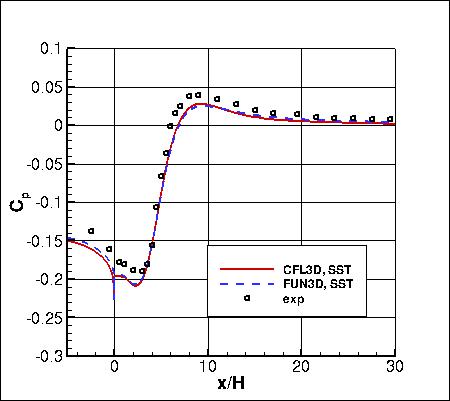
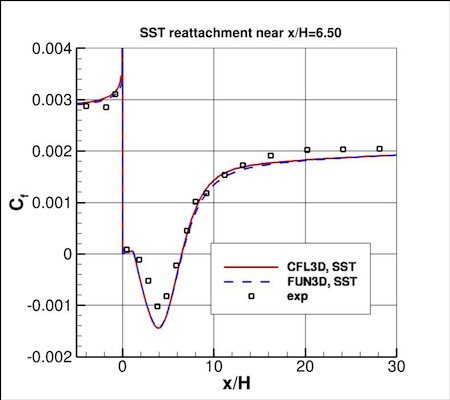
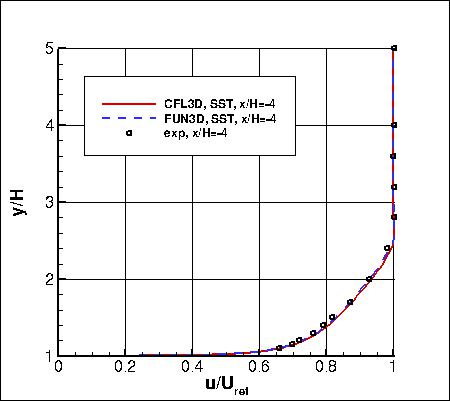
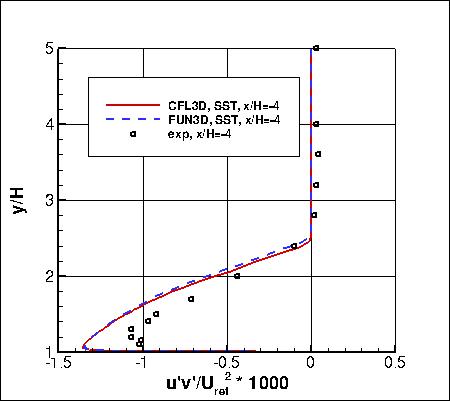
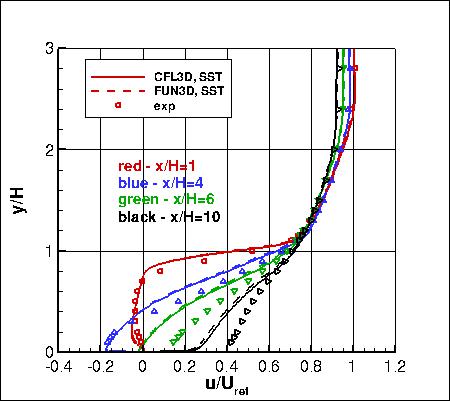
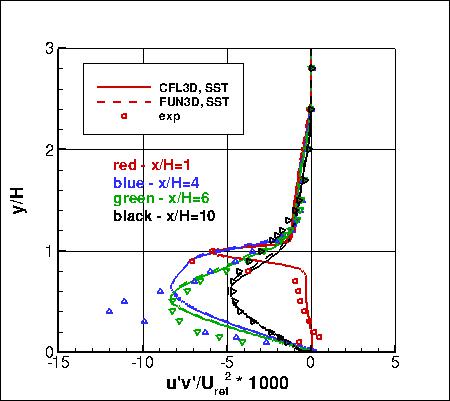
Page Curator:
Clark Pederson
Last Updated: 03/12/2025